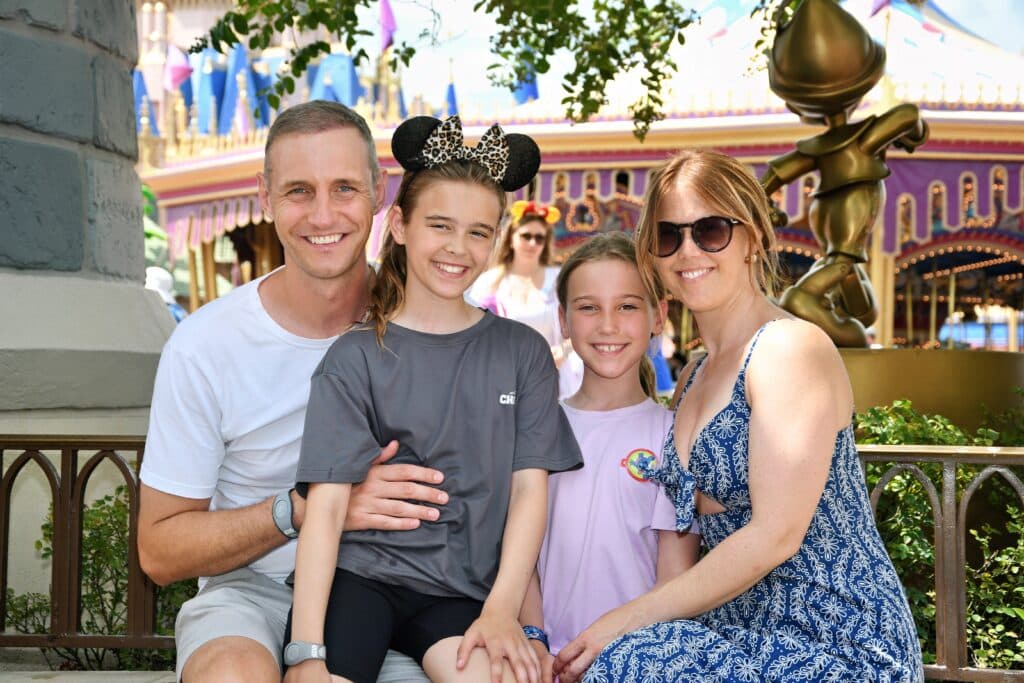My decision to get a hair transplant wasn’t made lightly. After years of seeing my hairline recede, I knew it was time for action. I chose to travel to Istanbul and undergo the procedure with Clinicana Hair Transplant & Esthetic in Turkey. In this article I’ll walk you through my experience month by month, from pre-op through the final results and reflections. I’ll also integrate what the research and industry experts say about hair transplant timelines.
If you’re considering a hair transplant, you might like to download my free guide: “8 Things I Wish I Knew Before Booking My Hair Transplant in Turkey” — it helped me avoid lots of rookie mistakes.
Let’s begin by setting the stage: what a hair transplant is, why I chose Turkey & Clinicana, and how I prepared.
Background: Understanding Hair Transplants & My Journey
What is a hair transplant?
A hair transplant (such as the common Follicular Unit Extraction or FUE) involves extracting hair follicles (grafts) from a donor area (typically the back/side of the scalp) and implanting them into thinning or balding zones. According to the Wimpole Clinic FAQ, when done by an experienced surgeon at a reputable clinic the success rate is high: “when performed by a skilled, experienced surgeon at a reputable clinic, hair transplants are often more than 90 % effective”. Wimpole Clinic+1
Medical literature emphasises the need for stable hair loss and suitable donor hair before proceeding. NCBI
Why Turkey And Why I Chose Clinicana
Turkey has become one of the world’s leading destinations for hair transplant surgery — lower cost, high volumes, and numerous specialist clinics. I chose Clinicana after reading reviews, checking their portfolio, and seeing that they catered well to international patients.
In choosing a clinic you want to check: surgeon credentials, graft counts quoted, donor area handling, after-care. My personal goal: restore my temples and hairline, with roughly 3000 grafts, as agreed in pre-operative consultation with Clinicana.
My pre-operative preparation & expectations
Ahead of surgery I followed the clinic’s instructions: stopped smoking and alcohol for a week, avoided certain medications, arranged accommodation in Istanbul for recovery, asked plenty of questions about what to expect. I set realistic expectations: I knew I wouldn’t see the “final” result for many months. That aligns with what clinics report: many patients don’t see full density until 10–12 months (or even 18 months) out. Wimpole Clinic+1
With that groundwork laid, let’s dive into the detailed month-by-month breakdown of how I progressed — and what you likely will too.
Day 0 to Month 1 – Immediate Post-Op & Early Healing
Day of surgery
At Clinicana I arrived early in the morning, consultation reconfirmed graft count and hairline design. On the day they performed the extraction (donor area back of my head) then implantation into the receding hairline and temples. I was nervous but the team were calm and thorough. I walked out the same day with driver back to my hotel in Istanbul.
I noticed mild swelling around my forehead (common) and small red dots where grafts were placed.

Week 1 (Day 1–7)
During this time:
- Donor area: small scabs, mild discomfort when sleeping, elevated head advised.
- Recipient (implanted) area: crusts formed around grafts as healing begins.
- I avoided heavy exercise, stayed well hydrated, followed the clinic’s saline spray and shampoo protocol.
According to the Wimpole Clinic, most FUE patients find their transplant surfaces have healed in five to seven days. Wimpole Clinic

Weeks 2–4 – Shedding (Shock-Loss)

One of the hardest phases: around week 2–4 I noticed much of the transplanted hair shedding. This is perfectly normal — the grafts enter a resting phase and shed before new growth begins. One source notes: “Shock loss can begin as early as 10 days … and may last up to 12 weeks.” Heva Clinic+1
Here’s how I felt: impulsive worry when the hair looked worse than before — but I reminded myself this is part of the process.
At the end of month 1 I could see redness fading, scabs mostly gone, but no real new hair growth yet. Which leads us into the next phase: the “ugly-duckling” phase.
I also experienced some shock loss during this period. It was at the sides as you can see from the below image. Shock loss is uncommon and although it looks pretty bad, it always grows back (as mine did after about 3 months).

Months 2–3 – The “Ugly Duckling” Phase
What’s happening biologically
During months 2–3 the transplanted follicles are in a kind of limbo. They’ve shed the hair shafts, are adapting in the scalp, and early growth begins but isn’t much. According to Ideal of Med’s month-by-month guide:
- Shedding usually peaks within 2–3 weeks.
- New hair growth starts within a few months. Ideal of MeD
And Dr Bonaros notes that at around three months “you should start to grow hair that is very fine, transparent, short and wispy” and that some area-to-area imbalance is normal. Hair Transplant Glasgow

My experience
- Month 2: I still had sparse visible new hairs, donor area looked normal, but the front looked thin and uneven.
- Month 3: The first tiny hairs appeared at the hairline and temples—very faint and light in colour. I photographed the progress at 8-week, 12-week marks. I also noted how others asked if I had anything done — because visually it didn’t look dramatic yet.
- Emotionally: this is the hardest part for many people — you’ve invested money and time, you see little visible benefit yet, and you might question your decision.
- As I waited I adhered to the after-care: gentle shampooing, no strenuous sport, sun protection. Clinics emphasise consistency in this phase..
By the end of month 3, I reminded myself that this phase is normal, and that significant change still lies ahead.
Months 4–6 – Early Growth & Gradual Improvement
What to expect
According to multiple sources:
- At about 4-6 months you should start to see real growth, though still immature. Treatment Rooms London+1
- Grace Touch Clinic’s timeline states: At 4-6 months results are “quite noticeable”. Grace Clinic
The hair is still fine, not yet full thickness, and blending with native hair takes time.

My journey
- Month 4: I began seeing more visible hairs at the hairline and temples—not full coverage but promising. I got a slight trim, found the donor area very discreet.
- Month 5: Density increased; I could see difference in side-by-side photos (pre-op vs now). I started styling more confidently and getting feedback from friends and partner.
- Month 6: This milestone felt like a “halfway” marker. The hair was visibly better than month 3, but when I looked closely I could still see thinner patches, especially at the crown (which I had less grafts placed).
- After-care: Clinicana check-in via video call, local scalp massage instructions, started planning when to cut my hair shorter once stable.
My reflections
This phase taught me patience—and that my expectations needed to adapt. I reminded myself: full maturity still takes months. The experience also helped me validate my choice of clinic and graft count.
Months 7–12 – Major Transformation Phase
What’s going on
Many clinics highlight that the most dramatic transformation happens between 9-12 months. For instance, Wimpole Clinic states “many people see their final results in 10-12 months, though in some cases up to 18 months.” Wimpole Clinic
Areas like the crown may take longer (12-18 months). Tecnifue International
My results
- Month 8: I could co-style with my native hair. The hairline looked much improved; donor area healed fully.
- Month 9: Friends and colleagues started commenting on the “new hair”. I cut the hair shorter for the first time since surgery and found it held shape nicely.
- Month 10: Photos showed full blending between native and transplanted hair. The density was good though still slightly thinner in the crown area (which I had not fully treated).
- Month 12: This was my “1-year check”. I compared pre-op images with now and smiled. The hairline looked natural, temples filled, overall appearance significantly enhanced.
- I reflected: the investment (time, travel, cost) was paying off. Would I recommend Clinicana? Yes—I felt supported, well-informed, and the staff responded to queries promptly during after-care.

Styling & maintenance
I used this phase to transition into “normal” haircare: regular shampoo, occasional colour (earlier I avoided aggressive treatments), short back & sides haircut. I also continued to monitor my crown zone and kept the option of a second session open (if density didn’t fully satisfy me).
Beyond 12 Months (12-18 + Months) – Final Results & Long-Term Care
When is “final”?
According to Aventus Clinic the “final stage” of growth occurs between 12-18 months, especially for the crown region and full thickness. Aventus Clinic
Even beyond that, hair still matures: darkening, thickening, texture improving.
My reflections & what I’d do differently
- Travel for surgery: I think doing the treatment abroad (Turkey) worked well for me—cost effective, good quality—but plan for a longer stay and comfortable accommodation in the early post-op period.
- Pre-op mindset: I wish I had prepared more for the “ugly duckling” phase (months 2–4) when things look worse before getting better.
- After-care discipline: sticking to instructions made a real difference; if I had relaxed too early I suspect the result might have been compromised.
- Photos: Keeping consistent weekly/monthly photos from Day 0 onward helped me stay motivated and track progress objectively. I recommend you do the same.
FAQs & Key Takeaways
Frequently Asked Questions
Q. How long until I see visible results?
A: Early signs may appear at 3–4 months; significant improvement often 6 months; near-final at 10–12 months; full maturity 12-18 months. Tecnifue International+1
Q. Why did my transplanted hairs shed?
A: This is normal “shock‐loss” or telogen effluvium; the grafted follicles are still intact. Shedding often occurs 2–6 weeks post-op. padra.com+1
Q. Will the donor area scar show?
A: With FUE, scarring is minimal (tiny dot-marks) and usually inconspicuous unless you shave head extremely close.
Q. Do I need a second session?
A: Possibly if you have diffuse thinning, extensive crown loss, or want higher density. Consult your surgeon once at ~12 months-post.
Q. Is Turkey safe for hair transplants? What should I check in a clinic?
A: Yes many quality clinics exist; check: certified surgeon, before/after galleries, after-care programme, local accommodation for recovery, transparent graft count, patient reviews.
Key Lessons from My Journey
- Set expectations properly early: don’t expect full density at 3 months.
- Document with photos weekly/monthly.
- Follow after-care instructions meticulously.
- Plan for the emotional “dip” during the months when results are minimal (2-4 months).
- Choose a clinic with strong support, especially for travelling patients.
Additional Resources & References
- “Hair transplant growth chart” – Wimpole Clinic: https://wimpoleclinic.com/blog/hair-transplant-growth-chart/ Wimpole Clinic
- “Hair transplant after 3 months: photos, results, side-effects” – Wimpole Clinic: https://wimpoleclinic.com/blog/hair-transplant-after-3-months-photos-results-side-effects/ Wimpole Clinic
- “How long does a hair transplant take to heal?” – Wimpole Clinic: https://wimpoleclinic.com/blog/how-long-does-a-hair-transplant-take-heal/ Wimpole Clinic
- “Hair transplant recovery timeline – month-by-month” – Ideal of Med: https://idealofmed.com/guides/hair-transplant-recovery-timeline-month-by-month-guide/ Ideal of MeD
- “Shock loss after hair transplant” – Dental Hair Clinic Turkey: https://www.dentalhairclinicturkey.com/blog/shock-loss-after-hair-transplant/ Heva Clinic
Conclusion
My year-plus journey with Clinicana in Turkey taught me patience, discipline and realistic expectations. From Day 0 through the shedding phase, into early growth, and finally achieving a result I’m proud of, the full timeline took time—but it was worth it. If you’re considering a hair transplant, use the guide I mentioned earlier to avoid common mistakes: click here for “8 Things I Wish I Knew Before Booking My Hair Transplant in Turkey”.
Remember: the result isn’t just about grafts or cost—it’s about choosing the right clinic, preparing mentally and physically, and following the process over months, not weeks.



 Continue with Google
Continue with Google